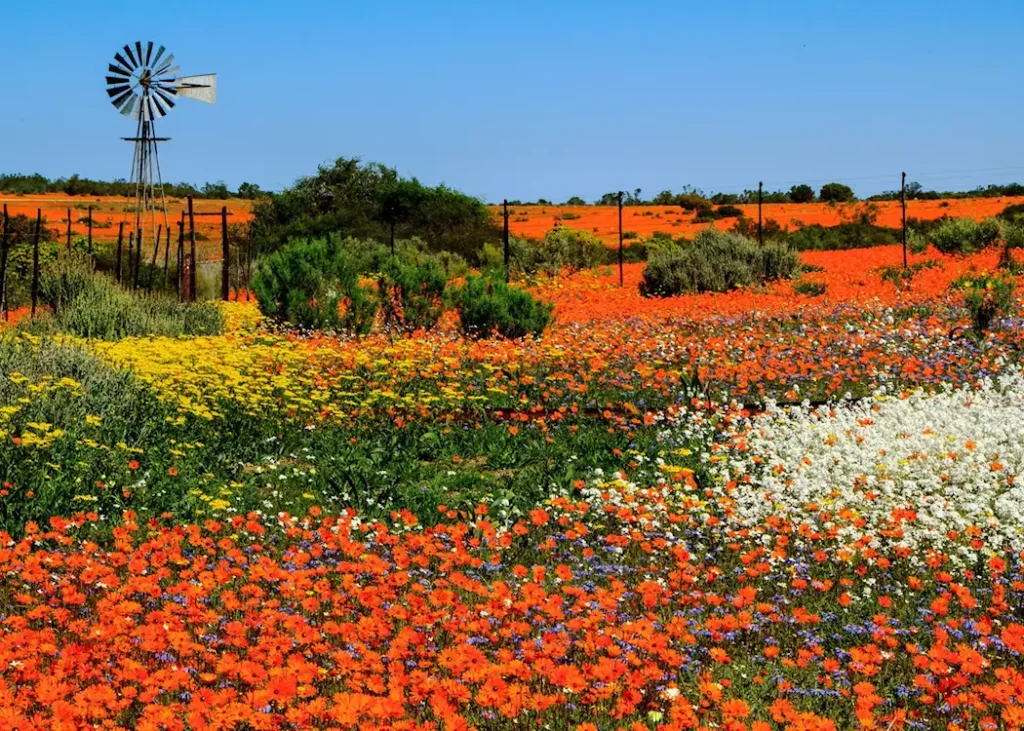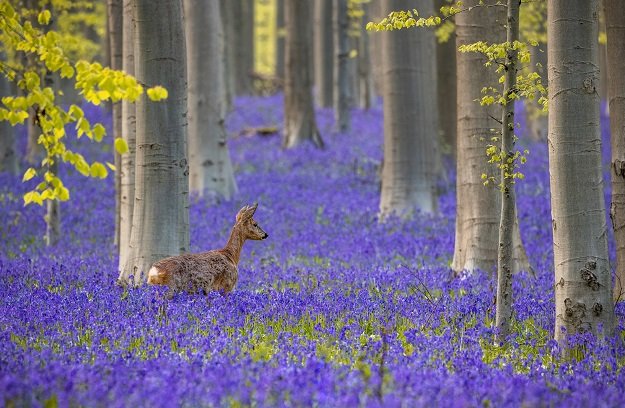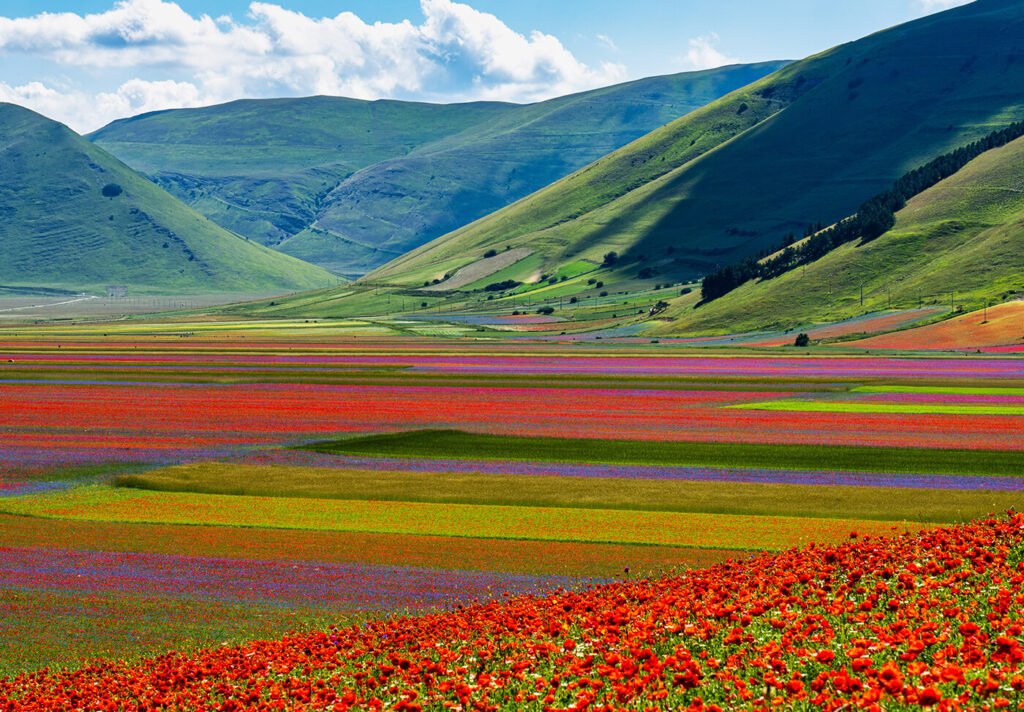Bahar yenilənmə və transformasiya mövsümüdür, təbiətin nəfəs kəsən rəng, ətir və canlılıq nümayişi ilə oyandığı vaxtdır. Qışın sərinliyi getdikcə, dünya daha uzun, günəşli günlər, zərif mehlər və havada təravət hissi təqdim edərək həyatla çiçəklənməyə başlayır. Bütün dünyada mənzərələr zərif albalı çiçəkləri, geniş lalə sahələri, qızıl nərgizlər və ətirli visteriya ilə heyranedici bir mənzərə yaradan canlı şah əsərlərə çevrilir.
Bu mövsüm sadəcə vizual ziyafət deyil, mədəni bayram və təbiətlə əlaqə zamanıdır. Bir çox bölgələr baharın gəlişini festivallar, adət-ənənələr və açıq hava toplantıları ilə qarşılayır və bu, səyahətçilər üçün dünyanın gözəlliyini tam çiçəklənən şəkildə kəşf etmək üçün ideal vaxta çevrilir. Yaponiyanın çoxəsrlik hanami (çiçək baxışı) ənənəsindən tutmuş Hollandiyanın ucsuz-bucaqsız lalə tarlalarına və Avropa və Şimali Amerikanın çöl çiçəkləri ilə örtülmüş vadilərinə qədər, bahar təbiətin ən gözqamaşdırıcı çevrilməsinin şahidi olmaq üçün ildə bir dəfə fürsət təqdim edir.
İstər albalı çiçəklərinin örtüyü altında gəzintiyə çıxın, istər lalə tarlalarının göy qurşağı arasında velosiped sürsün, istərsə də çöl çiçəkləri ilə örtülmüş yuvarlanan çəmənliklərdə gəzintiyə çıxmağınızdan asılı olmayaraq, yaz açıq havanın gözəlliyini qucaqlamaq vaxtıdır. Təbiətin ən heyrətamiz şousunu nümayiş etdirdiyi yerlər axtarırsınızsa, burada tam çiçəklənən baharın sehrini yaşamaq üçün ən yaxşı yerlərdən bəziləri var.
For most of the year, Namaqualand, a vast and arid region in South Africa, appears as a rugged, sun-scorched landscape. The terrain is dry, rocky, and sparsely vegetated, with only hardy shrubs and succulents managing to survive the harsh conditions. However, for a few magical weeks between August and September, as spring arrives in the Southern Hemisphere, this seemingly barren land undergoes an extraordinary transformation. With the arrival of seasonal rains, dormant wildflower seeds awaken, and Namaqualand bursts into a breathtaking floral spectacle, attracting nature lovers, photographers, and travelers from all over the world.
The explosion of colors includes an array of wildflowers in vivid shades of orange, yellow, pink, purple, and white. Fields of Namaqua daisies create dazzling carpets of orange and white, while bright yellow gansies (Gazania species) and delicate purple vygies (Mesembryanthemum) add contrast to the landscape. Succulents, lilies, and rare species such as the striking Bulbinella and Sparaxis also make an appearance, adding to the region’s botanical richness.
Nestled just outside Brussels, Hallerbos is a hidden gem that transforms into a mesmerizing, fairytale-like wonderland every spring. The forest, known as the “Blue Forest” due to its breathtaking bluebell carpet, is one of Europe’s most enchanting natural destinations. Located in the heart of the Belgian countryside, Hallerbos is an ancient forest with winding trails, towering beech trees, and a sense of tranquility that captivates visitors year-round. However, it is in April that Hallerbos reaches its peak beauty, when a dense blanket of bluebells unfurls across the forest floor, creating a vibrant, violet-blue sea of flowers.
The sight is utterly magical—imagine walking through a quiet, shadowed forest, the ground beneath your feet covered in a layer of soft, vibrant bluebells that stretch as far as the eye can see. The deep purple and blue hues of the flowers contrast vividly with the lush green of the mossy undergrowth and the fresh, tender leaves of the beech trees. The air is fragrant with the delicate scent of the blossoms, adding to the sensory experience that transports visitors into a serene, almost otherworldly realm.
Nestled in the Apennine Mountains of central Italy, the small village of Castelluccio is home to one of the country’s most awe-inspiring natural spectacles: La Fiorita, or “The Flowering.” This extraordinary event occurs every late spring, typically between late May and early July, when the surrounding plains are transformed into a vibrant, living tapestry of wildflowers. Castelluccio, which sits at an altitude of 1,450 meters (4,757 feet) above sea level, becomes the focal point of an annual bloom that attracts nature lovers, photographers, and hikers from all over the world.
During La Fiorita, the entire valley surrounding Castelluccio is blanketed in a kaleidoscope of wildflowers, turning the region into an unforgettably beautiful landscape. The fields are covered with a riot of colors—red poppies, blue cornflowers, yellow daisies, and purple vetch stretch out in every direction, creating a patchwork quilt of blooms that seem to glow in the sunlight. The flowers grow in layers, with some species covering the valley floor while others grow higher up on the hillsides. As a result, the view is dynamic and constantly changing, offering different perspectives with every step.










